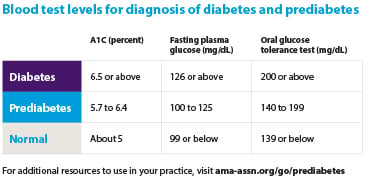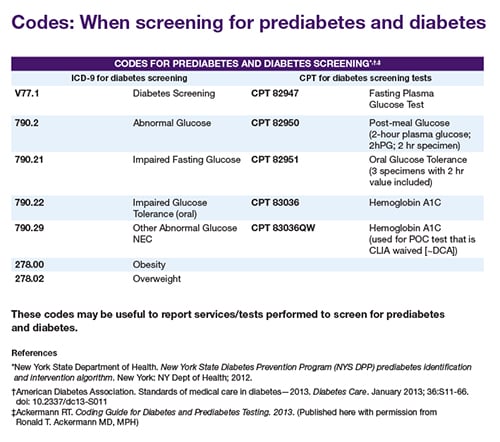While 29 million Americans have diabetes, another 86 million adults are on the path to developing the disease because they have prediabetes. These new estimates from the Centers for Disease Control and Prevention (CDC) underscore the urgency of screening patients for prediabetes to help them avoid becoming a statistic.
People with prediabetes are at increased risk for developing type 2 diabetes as well as heart disease and stroke. The good news is that prediabetes is a reversible condition. That’s why screening is so important.
People with prediabetes have blood glucose levels that are higher than normal but not high enough to be diagnosed as diabetes. Prediabetes has no clear symptoms, but some individuals with prediabetes have signs of type 2 diabetes, such as intense feelings of thirst.
Physicians can use a few different ways to test for prediabetes, including the A1C test, fasting plasma glucose (FPG) test or oral glucose tolerance test (OGTT). A1C results of 5.7 to 6.4 percent, FPG levels of 100 to 125, or OGTT levels of 140 to 199 indicate prediabetes.
Codes to use when reporting prediabetes and diabetes screening are listed in the chart below.
The AMA is focusing on prediabetes through its Improving Health Outcomes initiative, working toward systematic prevention of diabetes to save lives, improve health and reduce health care spending.
A pilot program in partnership with the YMCA, currently taking place at locations in three states, will establish a process for physicians to increase screening for prediabetes and refer patients to the YMCA’s Diabetes Prevention Program in their communities.
Visit the CDC’s National Diabetes Prevention Program website to find out whether an evidence-based diabetes prevention program is available in your community.





